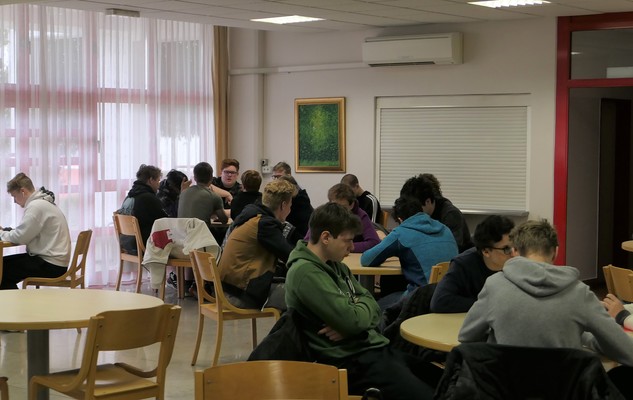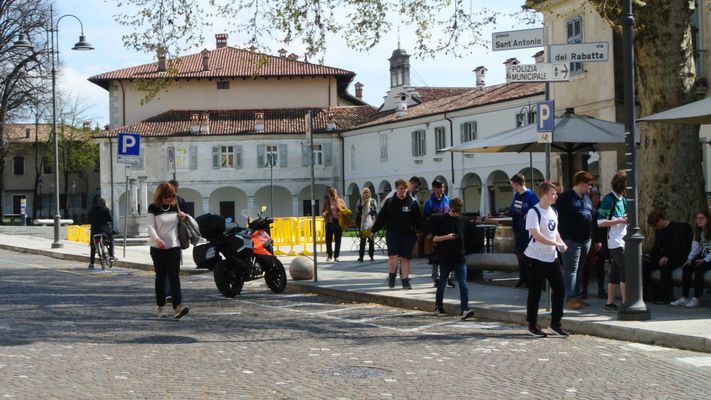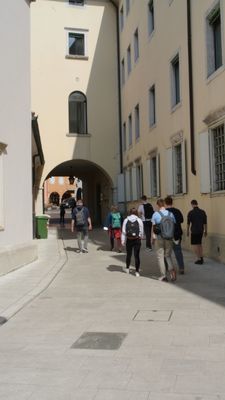Monday, the 4th of April was the first day for the Erasmus meeting in Nova Gorica, Slovenia. It was hosted by Solski Center Nova Gorica.
The Estonian and German delegations consisting of 21 students and 4 teachers arrived a day before, getting from a cold winter to the warm spring. As all the groups - Slovenian, German and Estonian - had met earlier, it was a great joy to see each other again.
Also a pattern had already occourred in our schedule. As on the previous two meetings, participants of the seminar were welcomed by the school headmaster. Short Slovenian language course, prepared and held by Slovenian students and teacher, gave Germans and Estonians ability to say some words in shops, cafes and moving around the town. A tour of school centre's premises showed the different possibilities of learning technical subjects as electronics, mototronics etc.
An introduction to the module 3 took place, as students were devided into seven groups to deal with the topic "IT devices and materials".
At the end of this day the guided tour around Nova Gorica was arranged. Slovenian teacher Tanja introduced us the history and nowadays of her hometown and we had an interesting walk through the city centre. We visited library, passed the local theatre, galleries, town hall, memorials and monuments. Nova Gorica became quite a familiar for everybody.
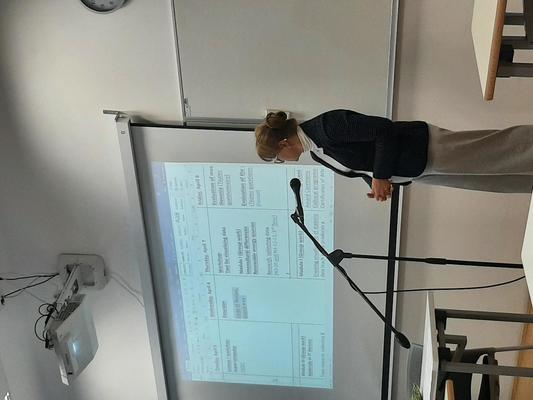
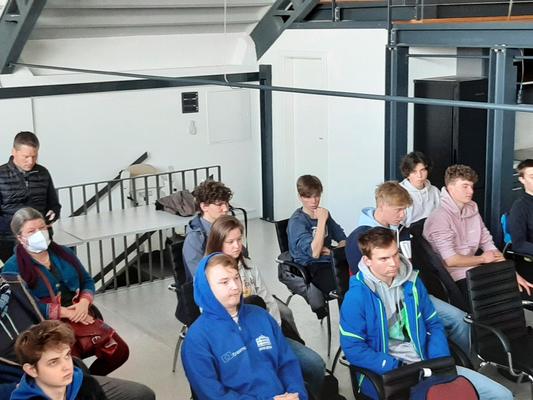
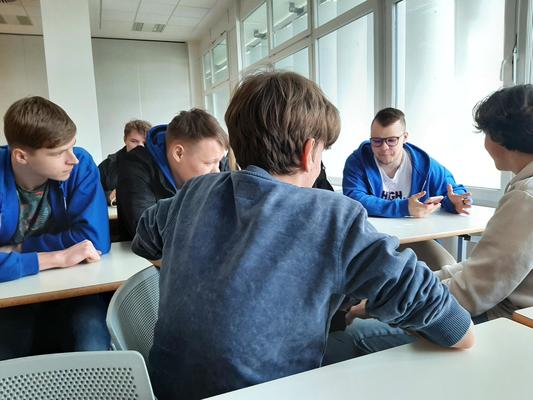
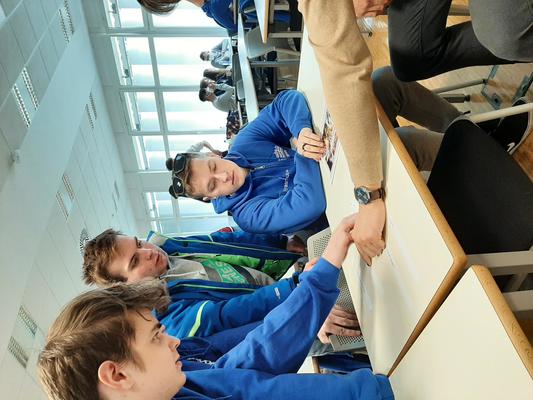
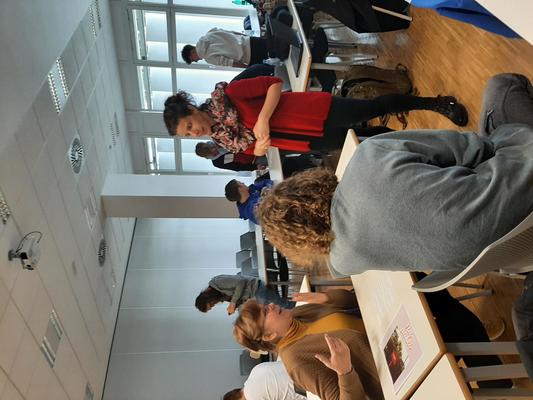
Tuesday, 5th of April started with a visit to development centre of Arctur, which has been pioneering by merging of research, science, art and business. Students and teachers were introduced the centre's 30-year-old history and also some success stories about using a supercomputer. We found out, that Arctur is the leading service provider of supercomputing in Central Eastern Europe.
We had a great opportunity to see this supercomputer ourselves as we were introduced its abilities and working process. The environmental issues were told by describing the heating and cooling systems.
The day continued with group work of module III "Materials in IT devices". Students prepared in seven groups posters about different devices - printers and scanners, smart phones, laptops, tablets, keyboards, cables and desktops. In summary there came the conclusion, that majority of materials are not re-used or recycled and they end in landfills, mostly in developing countries.
In the afternoon there was a networking cafe, joining in NEW WET project. Nova Gorica has invented a creative way to lighten the town during Christmas, as it was possible to drive the exercise machine, which ignited Christmas decorations. There are more possibilities available, if to connect the exercise machine to engine of any domestic appliances.
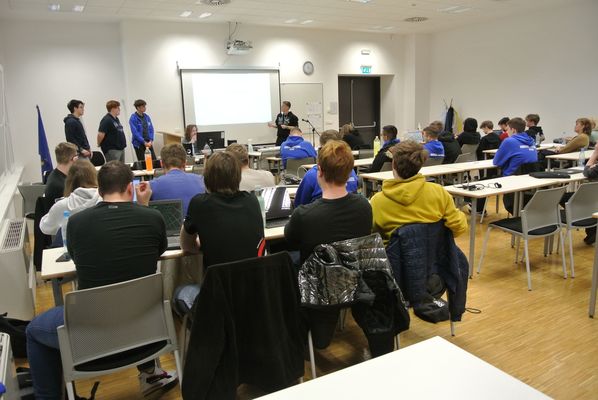
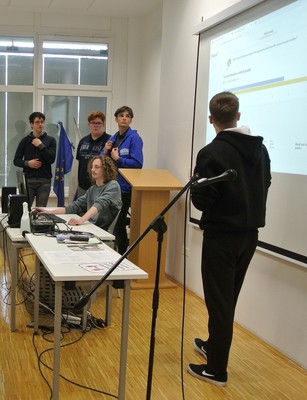
Wednesday, 6th of April started with the trip to Slovenian coastal areas. The main purpose was the Skocjan Caves Park, a classical carst area. Due to its extraordinary underground canyon, basic research of karst phenomen, rich archeological heritage and great biodiversity, these caves were included in the UNESCO natural and cultural world heritage sites list in 1986. Hiking through the deep canjons was a challenge, but however, everything went well. The views were fantastic both inside and outside the caves.
After having a lunch in Izola, we moved on to Koper, which is rich of history. This town is known as a huge container port and also tourism is very important. We had a walk in old town and enjoyed the seaside.
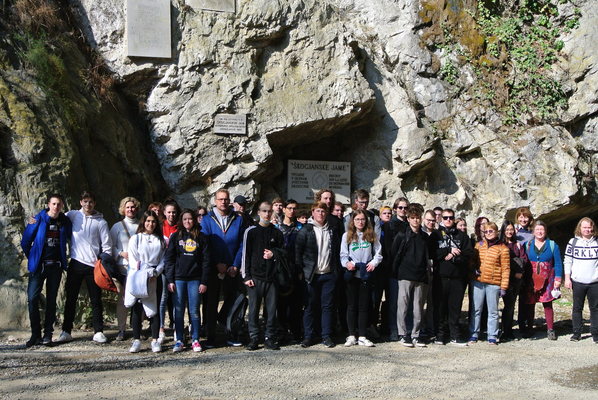
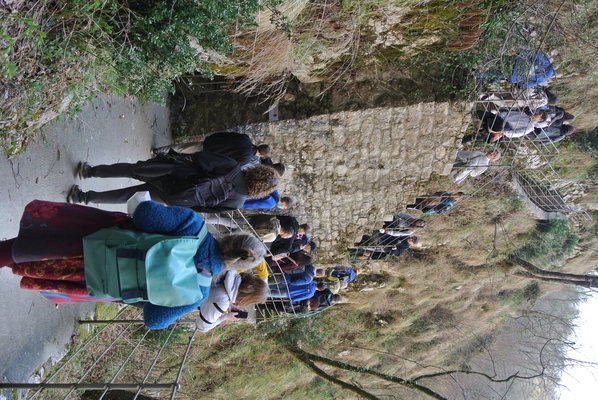
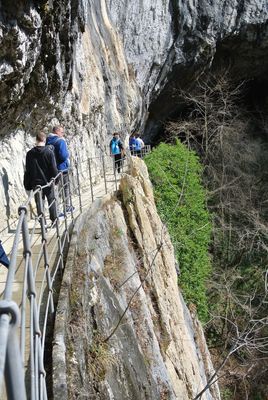
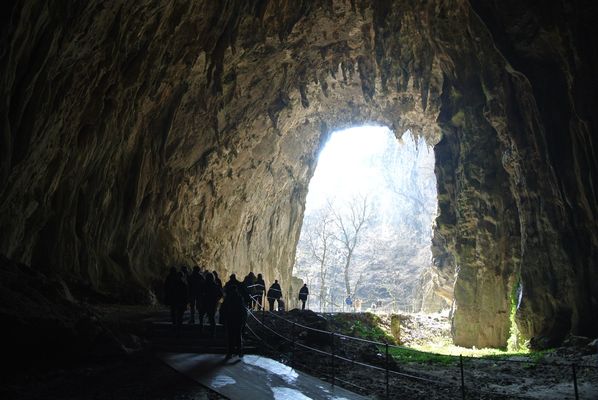
Thursday, 7th of April the students turned back to the Module I, working with a topic "Intercultural differences. Renewable energy sources".
Before they started, they were participating in a workshop how to visualise data by using different tools. It gave to participants some knowledge how to collect, organize and present information and how to create stories from visualised data.
The next item of our agenda there was a group work about renewable energy sources. Each group got a topic about different energy and prepared presentation, creating visualisation of statistic data and using their new knowledges about it.
The topics turned out to be wind, geothermal, biomass, solar, nuclear, hydropower and tidal energy. In summary we can admit, that the governments of all the 3 country - Slovenia, Germany and Estonia - encourage entrepreneurs to produce the reusable energy and there are a lot of possibilities to find energy sources which don't pollute our planet.
In the afternoon Estonian and German students were taken to guided tour to Gorizia - it is an old city centre aged of thousand years which lies at the other side of the railway, in Italy. As a symbol of the times when the place was devided into two parts, there is an Europe square , where you can see the old border mark and stay one foot in Slovenia, one foot in Italy. Luckily nowadays you can just have a nice walk from one part to other.
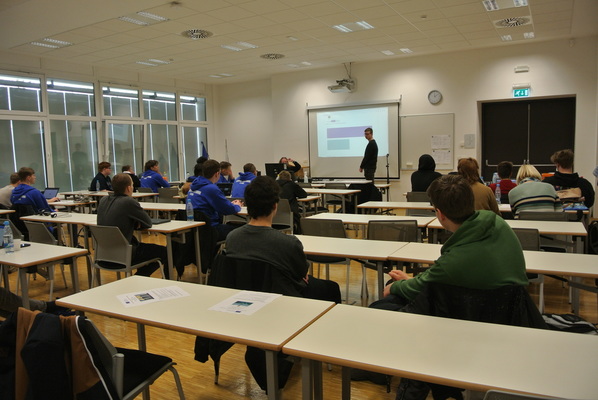
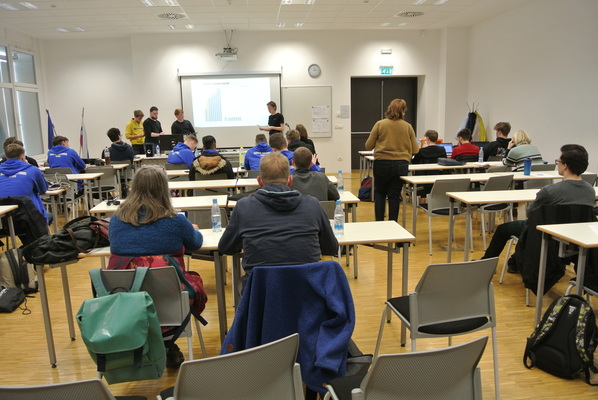
Friday 8th of April was the last day of our project meeting. Students finalized their last tasks and as in previous times, they had to complete a Teams questionnaire about the Slovenian meeting and give their assessment to whole project, including meetings in Rakvere, Wipperwürth and Nova Gorica.
On the basis of the evaluation answers we can reach to the conclusion, that students were satisfired with acquired knowledges and experiences.
The day continued with cultural program, as two musicians presented us some Slovenian music by double basses. Slovenian boys had prepared also special Slovenian Easter food. At the end of the day all participating students and teachers received a Certificate of Attendance.
The Slovenian project coordinator Tanja Ožbolt gave a cordial closing speech, thanking everyone who had contributed to this Erasmus+ project week in Slovenia.
Both teachers and students remain to be remembered these meetings with good memories and many of us hope to see each other again.
